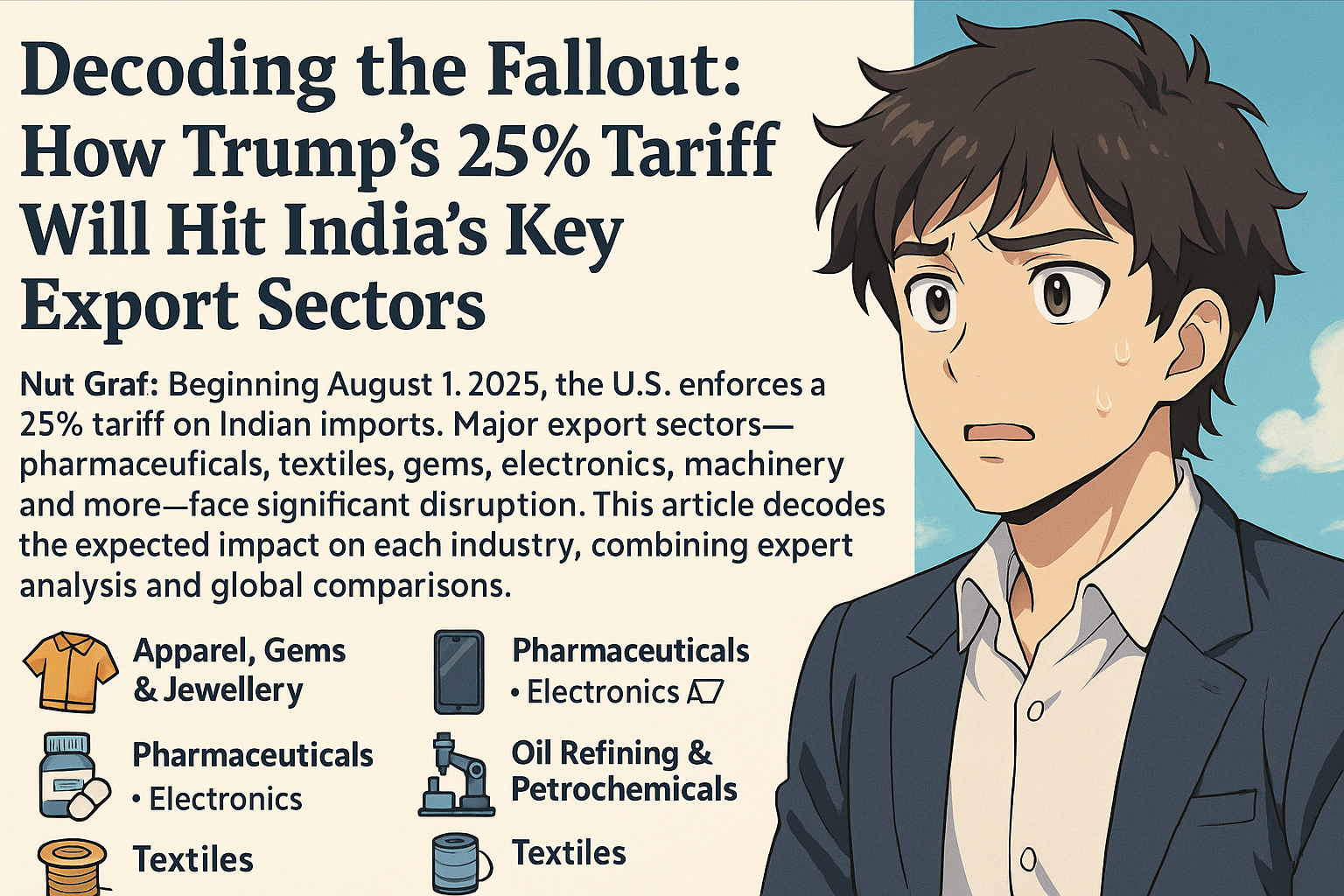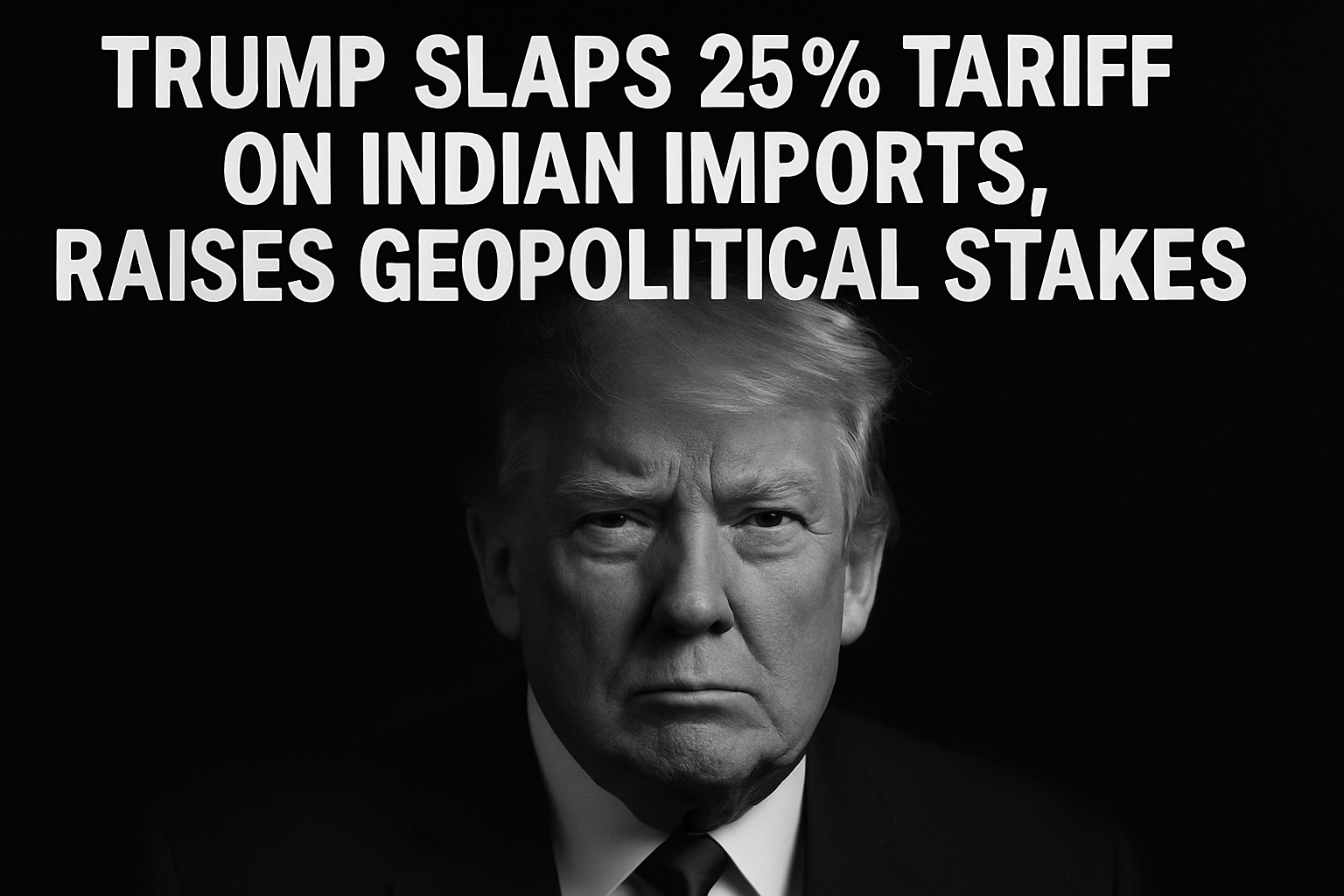Beginning August 1, 2025, the U.S. enforces a 25% tariff on Indian imports. Major export sectors—pharmaceuticals, textiles, gems, electronics, machinery, and more—face significant disruption. This article decodes the expected impact on each industry, combining expert analysis and global comparisons.
Sectoral Breakdown: Who’s Most Vulnerable?
1. Apparel, Gems & Jewellery
- India exported approximately $22 billion worth of garments and jewellery in 2024.
- Key exporters draw 40–70% of their revenues from the U.S.
- Rajasthan’s industry may see millions of job losses.
- Vietnam, facing only 20% tariffs, could capture lost market share.
2. Pharmaceuticals
- The U.S. is a top market, accounting for around 30–40% of Indian pharma exports.
- Indian generics dominate U.S. drug shelves.
- Pharma leaders argue that U.S. healthcare may face more disruption than India.
3. Electronics & Smartphones
- India became the largest smartphone exporter to the U.S. in Q2 2025.
- Electronics exports surged to ~$23.6B in FY24.
- New tariffs may sharply reduce price competitiveness.
4. Machinery, Capital Goods & Auto Components
- India exports over ₹62,000 crore worth of machinery to the U.S.
- Tariffs will jump from 1–2% to 25%.
- Earnings for exporters like Bharat Forge could fall 17%.
5. Oil Refining & Petrochemicals
- Petroleum product exports from India exceed $20 billion.
- Additional penalties over Russian oil purchases could intensify pressure.
6. Textiles, Leather & MSMEs
- States like Punjab and West Bengal face steep contraction risks.
- In Ludhiana alone, order cancellations may cross ₹1 lakh crore.
What Are Analysts Saying?
- Around 87% of India’s $66B exports to the U.S. are tariff-sensitive.
- Pharmaceuticals, gems, electronics, and textiles top the vulnerability index.
- GDP growth could be trimmed by up to 40 basis points.
- Short-term market dips are likely, but long-term fundamentals remain strong.
Global Context & Competitive Dynamics
- India now faces a 25% flat rate.
- Vietnam, Indonesia, and Japan are taxed at 20%, 19%, and 15%, respectively.
- Indian exporters face existential pressure to remain cost-competitive.
- There are calls for WTO filings and bilateral renegotiations.
Timeline & Negotiation Dynamics
- Feb–May 2025: Modi-Trump negotiations stall over agri-trade and defense deals.
- July 30, 2025: Trump announces the tariff hike, citing Russia ties.
- August 1, 2025: Tariff officially implemented.
- August 2025: Legal reviews and trade dialogues expected to resume.
Strategic Implications: What Lies Ahead?
- Exporters are urging for sector-specific relief programs and tax credits.
- India may pivot its focus to EU, ASEAN, UAE, and domestic scaling.
- While investor panic is minimal, key sectors could suffer prolonged contraction.
Summary Table
| Sector | Export Value / Exposure | Previous Tariff | New Tariff | Key Risks |
|---|---|---|---|---|
| Gems & Jewellery | ~$8–13B, U.S. ~30–40% | ~2–3% | 25% | Job loss, competitive erosion |
| Pharmaceuticals | ~$9B, U.S. ~30–40% | ~0% | 25% | Supply disruption, cost hike |
| Smartphones & Electronics | ~$3–11B | ~0.4–1.3% | 25% | Margin squeeze, market share loss |
| Machinery & Auto Parts | ₹62,150 Cr | ~1–2% | 25% | Declining exports, earnings risk |
| Textiles, Leather, MSMEs | High labor dependence | ~1–3% | 25% | Order cancellations, job insecurity |
Final Word
While India’s export ecosystem is structurally robust, this tariff shock disproportionately affects high-exposure sectors and regional manufacturing clusters. The coming weeks will be crucial in determining whether trade diplomacy can defuse the fallout or whether India must recalibrate its global supply chains under pressure.
India



